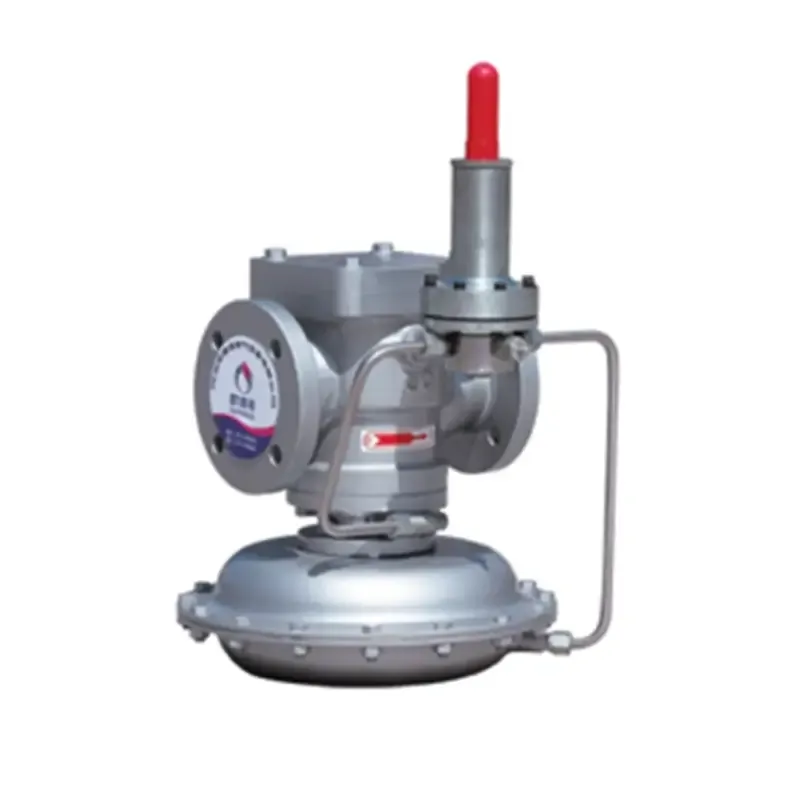
Nov . 08, 2024 06:54
Back to list
Understanding the Functionality and Applications of Pneumatic Valves in Automation Systems
Pneumatic Valves An Essential Component in Modern Automation
In the rapidly advancing world of automation, pneumatic valves play a critical role in controlling fluid flow and pressure in various industrial applications. These devices, which regulate the flow of compressed air or gas, are vital in a wide array of sectors—including manufacturing, food processing, pharmaceuticals, and automotive industries. Understanding the workings and applications of pneumatic valves is essential for anyone involved in system design, maintenance, or operations.
A pneumatic valve operates by controlling the direction, pressure, and flow of compressed air within a system. They are typically classified into several types, including directional control valves, flow control valves, and pressure control valves. Each type serves a unique function, ensuring that various machinery and processes operate efficiently.
Directional Control Valves are perhaps the most common type of pneumatic valve. They manage the path through which compressed air travels to execute specific actions, such as moving a piston or engaging a cylinder. Most directional control valves are classified based on the number of ports they have and the number of switching positions. For instance, a 5/2 valve has five ports and two switching positions, allowing for controlled actuation of double-acting cylinders.
The Flow Control Valves regulate the speed of actuators by adjusting the rate of airflow within the system. This means that operators can fine-tune the speed at which a cylinder extends or retracts, enabling precise control over operations. Flow control valves can be manually adjusted, or they can be equipped with automatic controls that respond to changing conditions in the system.
Pressure Control Valves are used to manage the pressure levels within a pneumatic system. These valves can either relieve excess pressure or maintain a specified pressure level. They are essential for protecting equipment and ensuring safe operation, as excessive pressure can lead to system failure or hazardous situations. Pressure relief valves, for instance, are set to open at predetermined pressure levels, automatically venting excess air to prevent overpressure conditions.
pneumatic valve

One of the most significant advantages of pneumatic valves is their reliability and speed. Pneumatic systems can operate quickly, making them ideal for applications that require rapid actuation. This speed, coupled with the ability to handle high forces with relatively low energy consumption, positions pneumatic valves as a favored choice for many industrial applications.
Moreover, pneumatic valves are often simpler and less expensive than their electrical counterparts. They do not require complex wiring or electronics, which can simplify installation and maintenance. However, this simplicity does not compromise their efficacy. Modern pneumatic valves are sophisticated devices that can be equipped with sensors, feedback systems, and automation interfaces, enabling them to integrate seamlessly into advanced control systems.
Despite their many advantages, pneumatic valves are not without challenges. One common issue is the potential for air leaks, which can lead to inefficiencies and increased operational costs. Regular maintenance and inspection are essential to mitigate this risk. Additionally, pneumatic systems may struggle in extreme conditions where temperatures or humidity levels fluctuate significantly; thus, selecting the right materials and valve types for specific environments is crucial.
In the context of Industry 4.0, pneumatic valves are evolving alongside digital automation strategies. The integration of IoT (Internet of Things) technology is paving the way for smarter pneumatic systems, allowing for real-time monitoring and control. Manufacturers are increasingly adopting smart pneumatic valves equipped with sensors that provide data on system performance, predictive maintenance, and real-time diagnostics, enhancing operational efficiency.
In conclusion, pneumatic valves are an indispensable element of modern industrial automation. Their ability to manage air flow and pressure efficiently allows for seamless operation in numerous applications. As technology continues to evolve, so too will the capabilities of pneumatic valves, integrating more seamlessly with digital solutions and enhancing their functionality within automated systems. Whether you are involved in engineering, maintenance, or operations, understanding pneumatic valves and their applications will be vital as industries embrace the future of automation.
Latest news
-
Safety Valve Spring-Loaded Design Overpressure ProtectionNewsJul.25,2025
-
Precision Voltage Regulator AC5 Accuracy Grade PerformanceNewsJul.25,2025
-
Natural Gas Pressure Regulating Skid Industrial Pipeline ApplicationsNewsJul.25,2025
-
Natural Gas Filter Stainless Steel Mesh Element DesignNewsJul.25,2025
-
Gas Pressure Regulator Valve Direct-Acting Spring-Loaded DesignNewsJul.25,2025
-
Decompression Equipment Multi-Stage Heat Exchange System DesignNewsJul.25,2025

